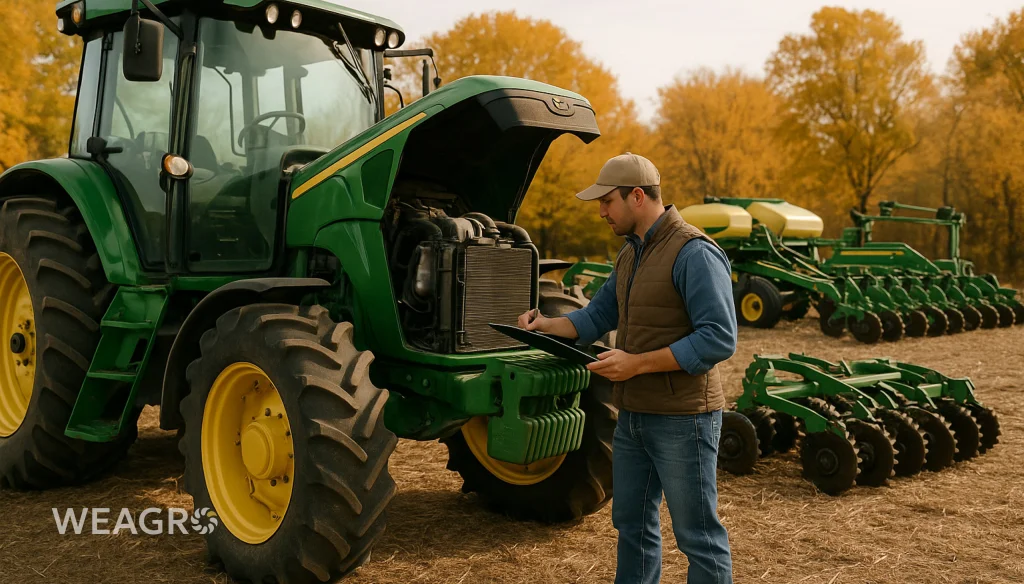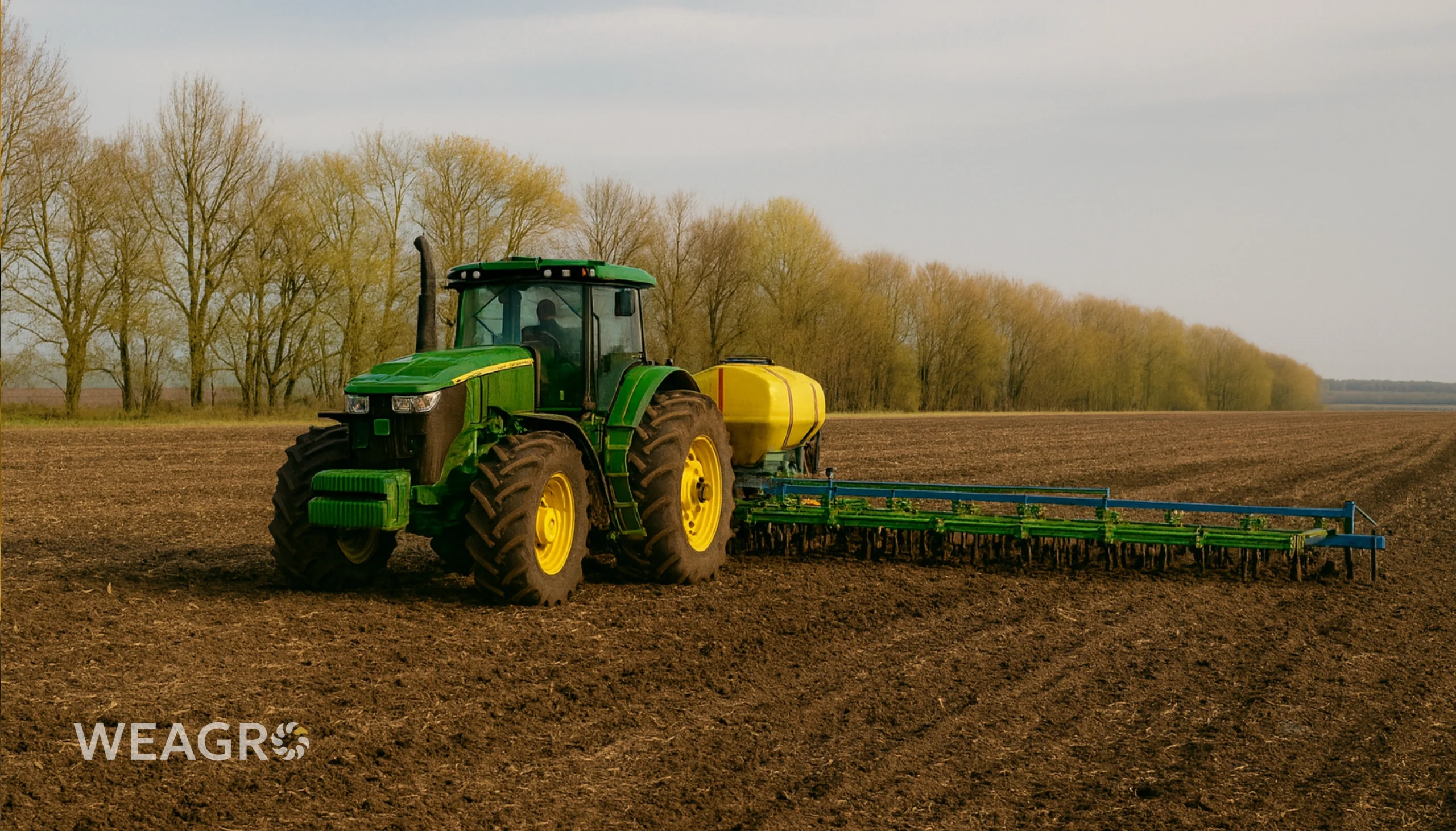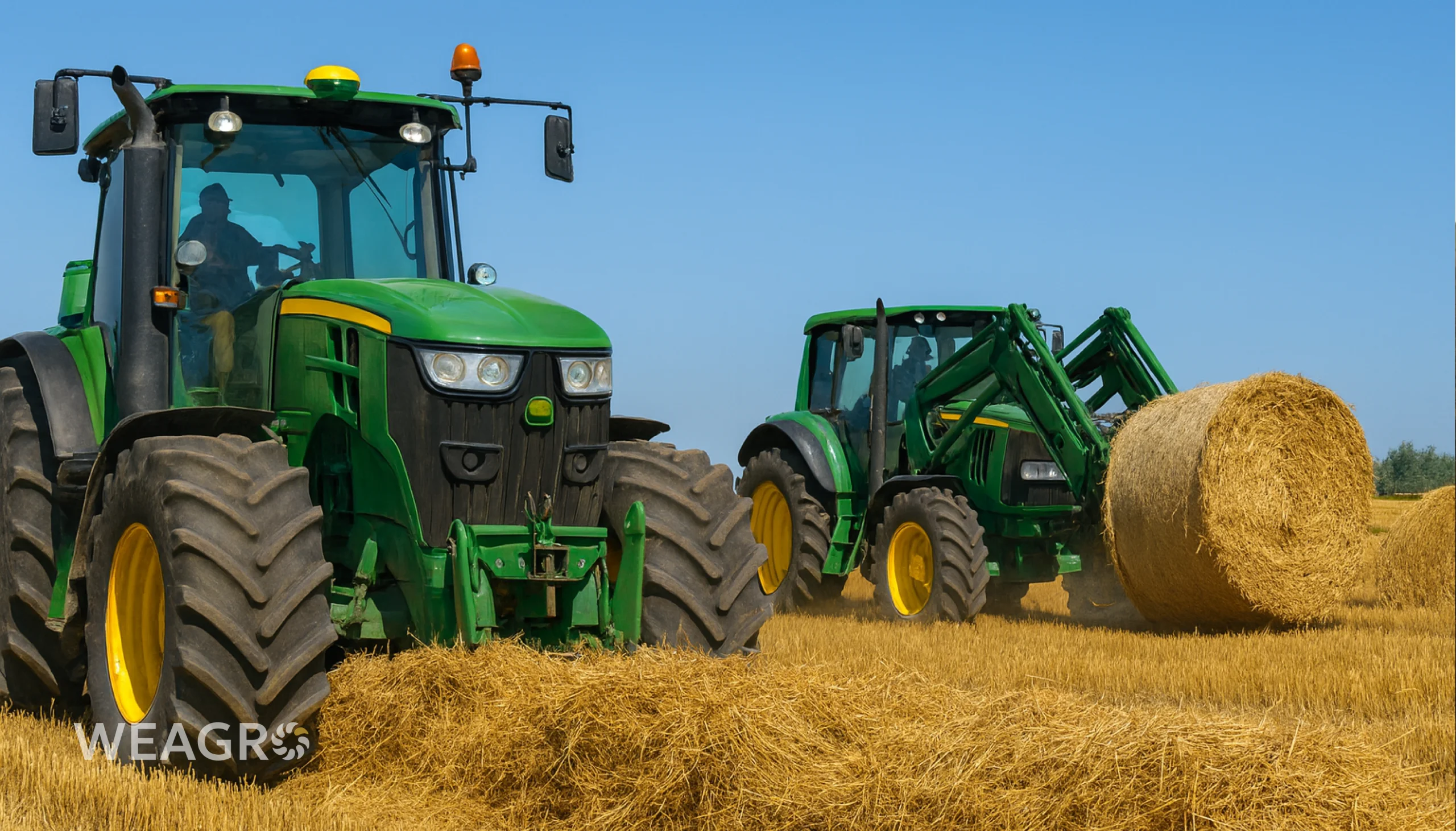Why Fall is the Best Time for Technical Upgrades
After the harvest, there’s a period when equipment stops for the first time in months. This presents a unique opportunity to objectively assess its condition, plan for maintenance, modernize, or completely replace worn-out units.
Unlike spring, when there’s no time for repairs and queues for parts delivery are booked in advance, fall allows for deliberate, planned, and most importantly, cost-effective action. During this period, farms that want to operate without interruptions in the next season prepare their equipment in advance. This isn’t about expenses—it’s an investment in stability.
Equipment Diagnostics: where to Start the Assessment
The first step is a systematic inspection of all machines that worked in the field. It’s not just about lubricating joints or changing oils, but conducting a technical audit.
Main areas to check:
– Chassis of tractors and attachments
– Transmission and hydraulic systems functionality
– Condition of seeders, cultivators, spreaders, plows
– Seed insertion units, planting depth, calibration
– Operation of navigation systems and precision farming monitors
The assessment is conducted both visually and through test runs or diagnostic software (for newer models). If the equipment is leased, it’s advisable to contact the lessor for warranty checks or service.
Most Common Units That Fail After the Season
Even with careful operation, equipment wears out after working dozens of hectares. Experience shows that there are typical elements that need replacement more often than others.
Most vulnerable areas:
– Coulters and discs in seeders
– Bearings, shafts, chains
– Hydraulic system pumps and hoses
– Sprayer nozzles
– GPS antennas and controllers (due to vibrations or dust exposure)
Detecting problems at an early stage means fewer expenses on emergency repairs during the peak season. And a plus—peace of mind during the next campaign.
When to Repair and when to Upgrade

One of the key moments of the fall technical inspection is deciding whether to repair the old or invest in the new.
Comparison criteria:
| Criterion | Repair | Upgrade (replacement) |
| Cost | Low/medium | Higher, but one-time |
| Risk of repeated breakdown | High (if equipment is worn) | Low (new unit) |
| Operational efficiency | Limited | Maximum |
| Energy efficiency | Average | Improved |
| Service life | 1-2 seasons | 5+ years |
Upgrading is particularly relevant for key equipment: seeders, tractors, tillage group. New units usually have higher productivity, save fuel, and work more precisely with fertilizers and seeds.
How not to Miss a Good Price: Seasonal Discounts and Market Limitations
In October-November, many official dealers offer promotional terms on new equipment—specifically during the off-season. Discounts, free operator training, extended warranty—all this is available only for a limited period.
After the New Year, demand increases, prices go up, and service queues stretch into spring. That’s why farms that work proactively place orders in the fall. This allows for calm preparation, savings, and avoiding risks at critical moments.
Agricultural Installment: how to Buy Equipment Now, without Waiting for Spring
One of the main issues holding back equipment upgrades is temporary lack of funds. Often, profits haven’t come in yet, product sales are ongoing, but the equipment already needs replacement.
This is exactly why the online agricultural installment service WEAGRO was created. Thanks to it, a farmer can buy the necessary equipment or components now, paying later—up to a year.
How it works:
– The farmer selects equipment from a partner supplier
– Fills out an online application (without trips to the bank)
– Receives a decision in 30 minutes
– The supplier receives full payment immediately
– The farmer uses the product today, and pays from profits—gradually
Installment is not a loan. There’s no collateral, no commission for the farmer, no paperwork hassle. It’s a flexible tool that gives freedom of planning.
Which Equipment Categories are most Often Processed through WEAGRO
The following products are available on the WEAGRO platform:
– Spare parts for tillage and seeding equipment
– Components for sprayers, headers, cultivators
– Modern seeders, rollers, disc harrows
– Precision farming systems (monitors, GPS navigation, sensors)
– Tractors and mini-equipment (through separate partnership agreements)
All suppliers undergo verification, provide guarantees, and have service support. If a needed vendor is not yet in the system, the farmer can request them, and the WEAGRO team will add them to the list.
What else to Consider when Upgrading Equipment

When planning an upgrade, it’s important to consider not only the cost of the unit, but also:
– Logistics: Is there delivery to your farm
– Service: Is there support in your region
– Staff training: Is preparation needed for the new model
– Maintenance costs: What consumables are needed and their availability
Upgrading equipment is not just a purchase. It’s a strategic decision that affects all subsequent stages of work.
Conclusions
Fall is the ideal period to modernize the technical park. Don’t wait until spring when the market is overheated, prices are rising, and time is working against the farmer. Right now is the best moment to objectively assess the condition of equipment, replace worn parts, plan upgrades, and avoid force majeure in the new season.
Thanks to the WEAGRO service, this has become easier: you don’t need to wait for profits, take loans, or postpone critical decisions. You get the equipment now—and pay when it’s convenient for you.
In the current realities of the agricultural sector, every producer is interested in optimizing costs and increasing work efficiency. The online service WEAGRO helps solve these tasks. It offers the possibility of purchasing material and technical resources, including fuel, in installments or with deferred payment. Using WEAGRO allows farmers to avoid tying up working capital, buy more resources, and receive discounts from suppliers.









